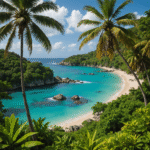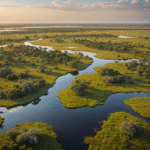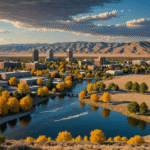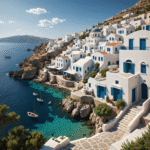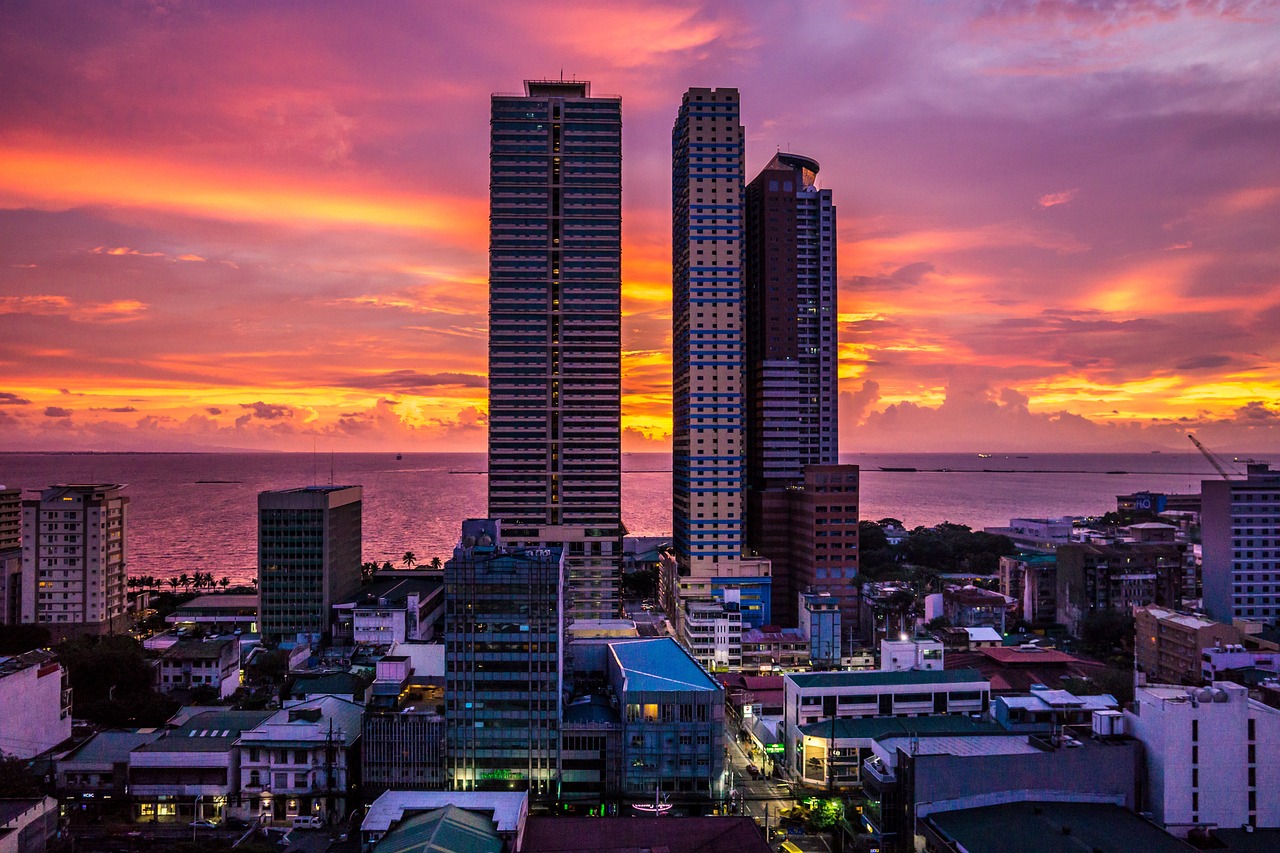
Island Hopping in the Philippines: An Ultimate Guide for 2024:
Introduction:
Island hopping in the Philippines is a dream adventure for many. With over 7,000 islands, the Philippines offers a unique blend of stunning landscapes, vibrant culture, rich history, and diverse wildlife. Whether you’re a solo traveler, a couple looking for a romantic getaway, or a family seeking fun activities, this guide will provide everything you need to make the most of your island-hopping adventure in 2024. So, pack your bags, put on your sunscreen, and let’s dive into the best that the Philippines has to offer.
Adventure Awaits: The Thrill of Island Hopping:
Island hopping in the Philippines is an exhilarating experience that goes beyond merely traveling from one island to another. It’s about immersing yourself in the breathtaking natural beauty, discovering hidden gems, and engaging in thrilling adventures that each island has to offer. Whether you are an adrenaline junkie, a nature enthusiast, or someone looking to relax in paradise, island hopping in the Philippines will provide you with unforgettable experiences.
Exploring Hidden Caves and Lagoons:
One of the most exciting aspects of island hopping in the Philippines is the opportunity to explore hidden caves and lagoons. In places like El Nido and Coron in Palawan, you can kayak through crystal-clear waters surrounded by dramatic limestone cliffs to discover secret lagoons. These secluded spots often feature pristine beaches and tranquil waters perfect for swimming and snorkeling.
Take the story of Alex, an adventure enthusiast, who ventured into the Big Lagoon in El Nido. He paddled through the narrow entrance, surrounded by towering karst formations, and emerged into a serene, turquoise lagoon. The stillness of the water and the majestic scenery made Alex feel like he had stepped into another world.
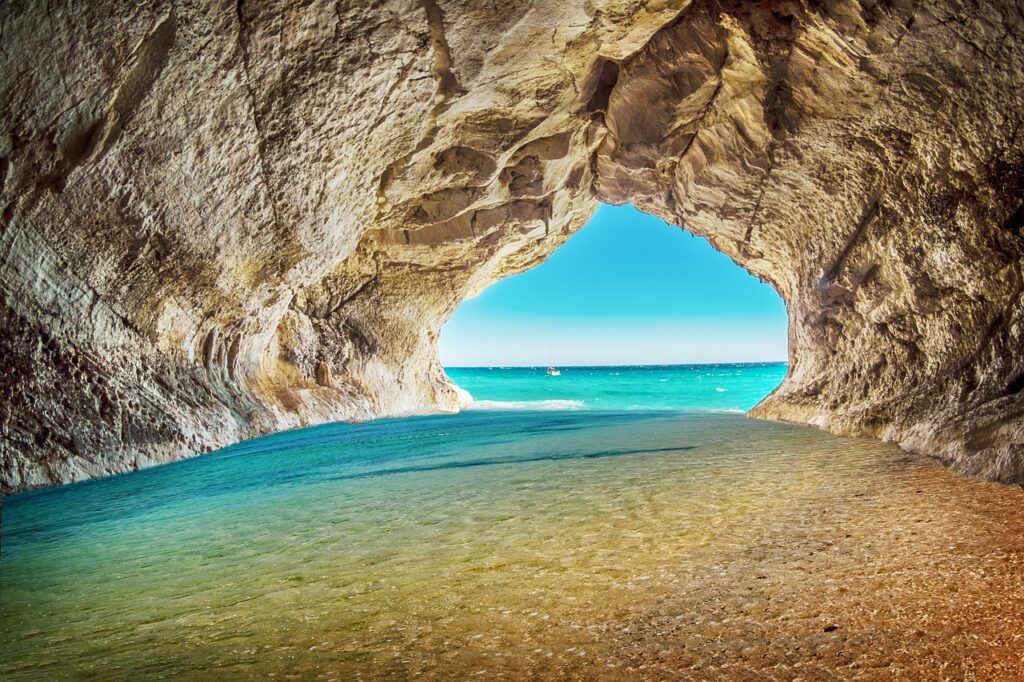
Diving into the Deep Blue:
The Philippines is renowned for its world-class diving spots. The Tubbataha Reefs Natural Park, a UNESCO World Heritage Site, offers some of the best diving experiences in the world. With over 600 species of fish, 360 species of coral, and a variety of marine mammals, the underwater biodiversity is astonishing. Divers can explore coral gardens, deep walls, and encounter species like whale sharks, manta rays, and sea turtles.
In Apo Reef, another top diving destination, adventurers can explore one of the largest coral reef systems in the Philippines. The vibrant coral formations and diverse marine life make every dive a unique and mesmerizing experience.
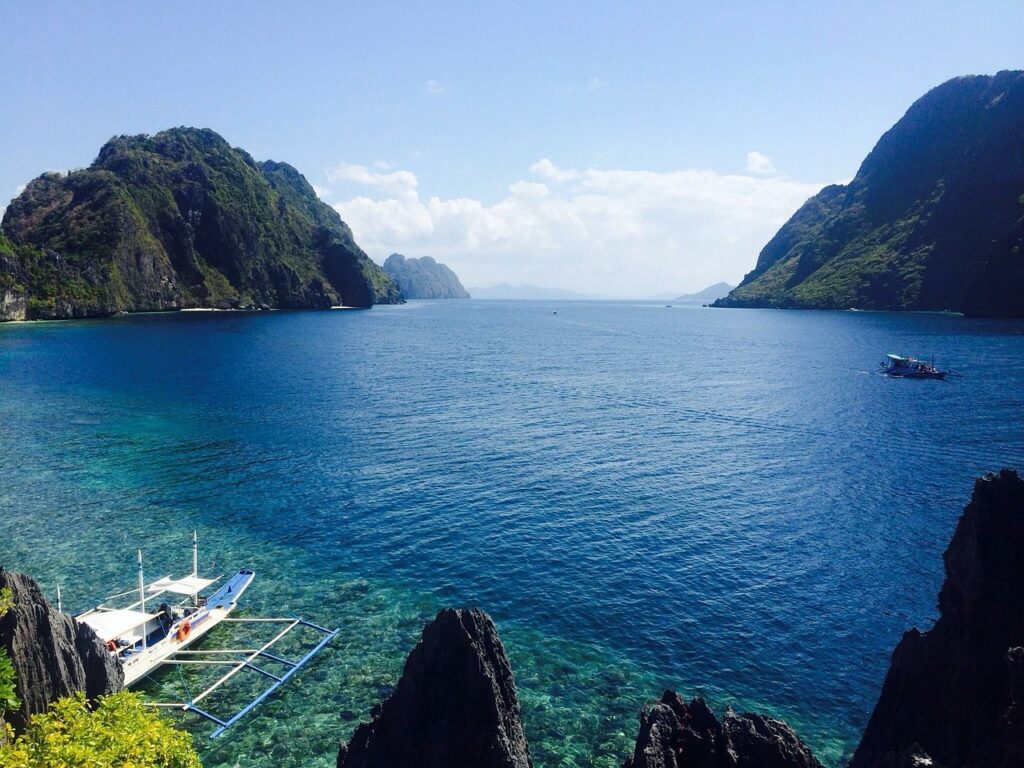
Hiking and Trekking Adventures:
For those who prefer land-based adventures, the Philippines offers numerous hiking and trekking opportunities. Mount Mayon, with its perfectly symmetrical cone, provides a challenging but rewarding hike. The climb to the summit is tough, but the panoramic views of the surrounding landscape make it worthwhile.
In the northern part of Luzon, the Banaue Rice Terraces offer a different kind of trekking experience. These ancient terraces, carved into the mountains by the Ifugao people over 2,000 years ago, are a UNESCO World Heritage Site. Trekking through the terraces offers stunning views and a glimpse into the traditional farming practices of the indigenous people.
Adrenaline-Pumping Activities:
For thrill-seekers, the Philippines has a plethora of adrenaline-pumping activities. In Siargao, the surfing capital of the Philippines, you can ride the famous Cloud 9 waves. The island attracts surfers from around the world, and the surf breaks are suitable for both beginners and experienced surfers.
If you prefer something more extreme, head to Cagayan de Oro for white-water rafting. The Cagayan River offers exhilarating rapids that range from beginner to advanced levels. Navigating through the rapids, with the lush jungle scenery around you, is an adrenaline rush like no other.
Wildlife Encounters:
Island hopping in the Philippines also provides opportunities for unique wildlife encounters. In Donsol, you can swim with whale sharks, the gentle giants of the sea. This once-in-a-lifetime experience allows you to get up close with these magnificent creatures in their natural habitat.
The Philippine Eagle, one of the largest and rarest eagles in the world, can be seen at the Philippine Eagle Center in Davao. This center is dedicated to the conservation of the critically endangered eagle and offers visitors the chance to learn about these majestic birds and the efforts being made to protect them.
Exploring Cultural Heritage:
Island hopping also allows you to explore the rich cultural heritage of the Philippines. The walled city of Intramuros in Manila offers a journey back in time with its Spanish colonial architecture and historic landmarks. Visiting the old churches, fortresses, and museums provides insight into the country’s colonial past and its struggle for independence.
In Vigan, a UNESCO World Heritage Site, you can stroll through cobblestone streets lined with well-preserved Spanish colonial houses. The city’s unique architecture and cultural significance make it a must-visit destination for history buffs and culture enthusiasts.
Beach Bliss and Relaxation:
Of course, island hopping in the Philippines also means plenty of time to relax on some of the world’s most beautiful beaches. From the famous White Beach in Boracay, known for its powdery white sand and vibrant nightlife, to the secluded beaches of Malapascua Island, each beach offers its own unique charm.
Imagine lounging on the beach with a refreshing coconut drink, watching the sunset over the horizon, and feeling the gentle sea breeze. Whether you prefer a bustling beach atmosphere or a quiet, secluded spot, the Philippines has a beach for every taste.
Culinary Delights: The 10 Best Restaurants in the Philippines:
The Philippines is not just a paradise for adventure seekers and beach lovers; it’s also a culinary haven. The country’s cuisine is a rich tapestry of flavors, influenced by its diverse history and culture. From traditional Filipino dishes to modern fusion cuisine, there’s something to satisfy every palate. Here are the top 10 restaurants you must try while island hopping in the Philippines:
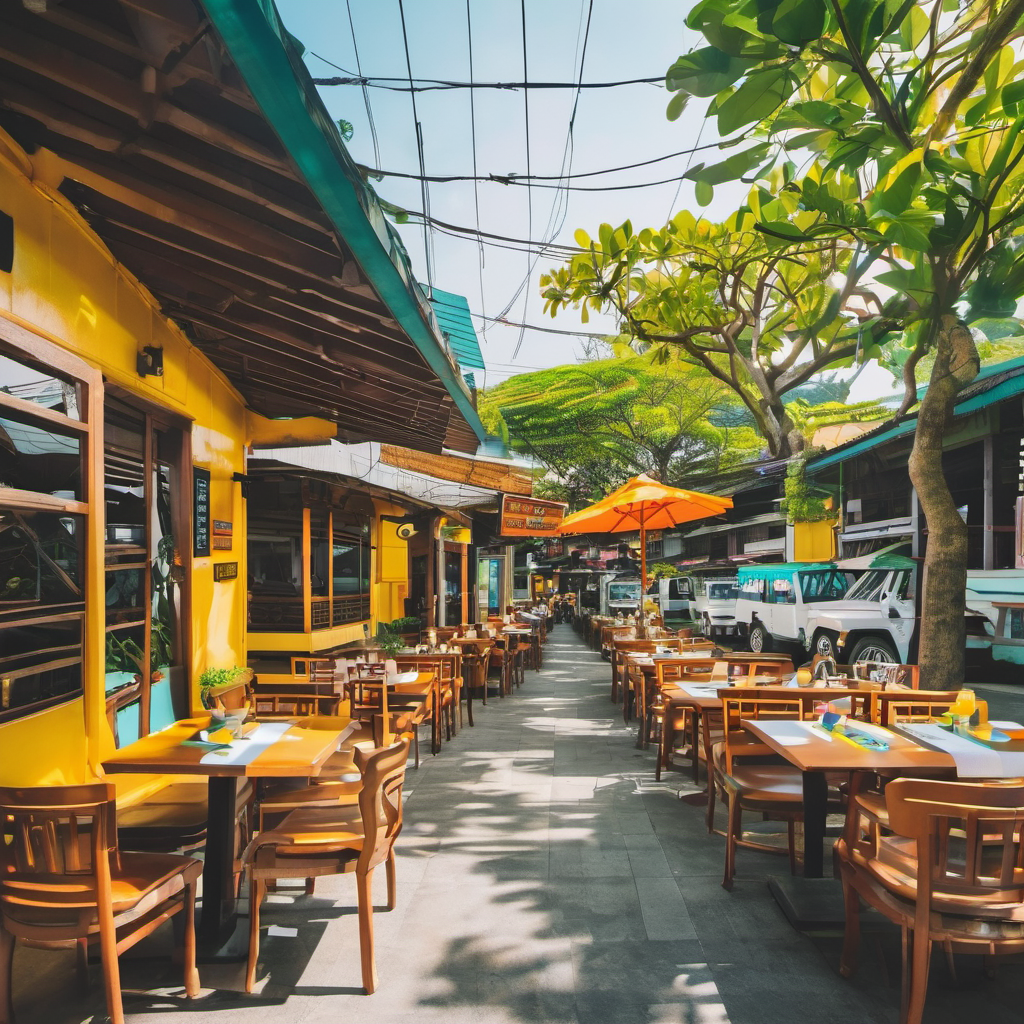
1. Antonio's (Tagaytay):
Located in the cool, scenic city of Tagaytay, Antonio’s is renowned for its fine dining experience and exquisite dishes. Set in a beautiful garden, the restaurant offers a romantic and tranquil ambiance. The menu features a blend of international and Filipino cuisine with a farm-to-table approach. Signature dishes include the Lamb Shank Adobo and the Foie Gras Terrine. Antonio’s commitment to quality and presentation makes it a favorite for special occasions and culinary enthusiasts.
2. Toyo Eatery (Manila):
Toyo Eatery in Manila is a modern dining establishment that has gained international acclaim for its innovative take on Filipino cuisine. Chef Jordy Navarra’s approach to cooking focuses on highlighting local ingredients and traditional flavors in creative ways. The restaurant’s tasting menu is a culinary journey through the Philippines, featuring dishes like Grilled Prawn with Aligue (crab fat) and the iconic Three-Cut Pork BBQ. Toyo Eatery’s minimalist yet stylish setting enhances the overall dining experience.
3. Abaca Baking Company (Cebu):
Abaca Baking Company, located in Cebu, is a popular spot known for its artisanal bread and pastries. Beyond its bakery offerings, the café serves a delicious menu of comfort food with a Filipino twist. From hearty breakfast options like the ABC Benedict to savory dishes like the Cebuano Lechon Sandwich, every bite is a delight. The cozy atmosphere and warm service make it an excellent place for a leisurely brunch or a quick coffee break.
4. La Cocina de Tita Moning (Manila):
Set in a historic mansion in Manila, La Cocina de Tita Moning offers a unique dining experience that combines history, culture, and cuisine. The restaurant serves classic Filipino dishes with a touch of elegance. Guests are treated to a tour of the mansion, showcasing antique furniture and memorabilia, before dining in one of the beautifully decorated rooms. Signature dishes include the Lengua (ox tongue) and the Paella Valenciana. Dining here feels like stepping back in time to the Spanish colonial era.
5. Balay Dako (Tagaytay):
Balay Dako, meaning “big house” in Negrense, is another gem in Tagaytay that offers hearty Filipino fare with stunning views of Taal Lake. The restaurant’s ambiance is both rustic and elegant, with an open-air terrace perfect for enjoying the cool breeze. The menu features traditional dishes like Crispy Pata, Kare-Kare, and Sinigang na Baboy. Balay Dako is also known for its weekend breakfast buffet, which offers a wide array of Filipino breakfast favorites.

6. Lantaw Floating Native Restaurant (Cebu):
Lantaw Floating Native Restaurant in Cebu offers a unique dining experience on a floating platform with panoramic views of Cebu’s coastline. The restaurant specializes in Filipino seafood dishes, served in generous portions. Popular items include the Grilled Squid, Buttered Shrimp, and Sinigang na Hipon (shrimp in sour broth). Dining at Lantaw is a feast for both the eyes and the taste buds, with stunning sunset views adding to the overall experience.
7. Café Ilang-Ilang (Manila):
Located in the historic Manila Hotel, Café Ilang-Ilang offers an extravagant buffet experience with a wide array of international and Filipino dishes. The restaurant’s elegant setting and attentive service make it a favorite for special occasions. The buffet stations include Japanese sushi and sashimi, Italian pasta, Filipino classics, and a decadent dessert selection. The Lechon Station, featuring roasted suckling pig, is a must-try for those looking to indulge in a Filipino delicacy.
8. The Pig & Palm (Cebu):
The Pig & Palm, a modern European restaurant with a Filipino twist, is located in Cebu. Run by Michelin-starred chef Jason Atherton, the restaurant offers a stylish dining experience with a menu that emphasizes quality ingredients and innovative cooking techniques. Signature dishes include the 18-Hour Pork Belly and the Grilled Octopus. The Pig & Palm’s chic interior and vibrant bar scene make it a great spot for both casual dining and special occasions.
9. Bistro Remedios (Manila):
Bistro Remedios in Manila is a cozy restaurant that offers traditional Filipino dishes with a focus on regional specialties and home-cooked flavors. The restaurant’s ambiance is warm and inviting, with Filipino décor and live music adding to the charm. Popular dishes include the Adobo Flakes, Pancit Palabok, and the Baked Tahong (mussels). Bistro Remedios is a perfect place to enjoy hearty Filipino cuisine in a relaxed setting.
10. Sunny Side Café (Boracay):
Sunny Side Café, located on the beautiful island of Boracay, is the go-to spot for breakfast lovers. The café’s bright and cheerful atmosphere, combined with its delicious menu, makes it a favorite among tourists and locals alike. Must-try dishes include the Bacon and Mango Grilled Cheese Sandwich, Chorizo and Egg Breakfast Burrito, and the famous Pancakes with Salted Caramel Butter. The Sunny Side Café is the perfect place to start your day with a hearty meal before hitting the beach.
The culinary scene in the Philippines is as diverse and vibrant as its islands. From fine dining establishments to cozy cafes, the country offers a wide range of gastronomic experiences that cater to every taste. Whether you’re savoring traditional Filipino dishes, indulging in modern fusion cuisine, or enjoying freshly baked pastries, the Philippines promises a culinary adventure that will leave you craving for more. So, make sure to include these top restaurants in your island-hopping itinerary and treat yourself to the delightful flavors of the Philippines.
Top 15 Things to Do in the Philippines:
Island hopping in the Philippines is a diverse archipelago that offers a wide range of activities and experiences for travelers. From pristine beaches and crystal-clear waters to lush mountains and vibrant cities, there’s something for everyone. Here are the top 15 things to do in the Philippines:
1. Island Hopping in Palawan:
Palawan, often dubbed the “last frontier” of the Philippines, is renowned for its stunning seascapes. El Nido and Coron are the main highlights, offering island-hopping tours that take you to secluded lagoons, pristine beaches, and snorkeling spots teeming with marine life. Don’t miss the Big and Small Lagoons in El Nido and the Twin Lagoons in Coron.
2. Visit the Chocolate Hills in Bohol:
The Chocolate Hills are a geological formation consisting of at least 1,268 hills spread over an area of more than 50 square kilometers. During the dry season, the green grass turns brown, hence the name. Visitors can enjoy the panoramic view from the Chocolate Hills Complex or adventure out on ATV rides around the hills.
3. Dive in Tubbataha Reefs Natural Park:
For diving enthusiasts, Tubbataha Reefs Natural Park is a must-visit. This UNESCO World Heritage Site in the Sulu Sea offers some of the best diving in the world, with vibrant coral reefs, diverse marine life, and clear waters. It’s accessible only by liveaboard, making it a remote but rewarding destination.
4. Explore the Banaue Rice Terraces:
Carved into the mountains of Ifugao over 2,000 years ago, the Banaue Rice Terraces are a testament to ancient engineering. Often referred to as the “Eighth Wonder of the World,” these terraces offer stunning views and a glimpse into the traditional farming practices of the Ifugao people. Hiking through the terraces is a popular activity for visitors.
5. Surf in Siargao:
Siargao is the surfing capital of the Philippines, known for its famous Cloud 9 wave. The island attracts surfers from around the world with its consistent waves and laid-back atmosphere. Apart from surfing, Siargao offers other activities such as island hopping, lagoon tours, and exploring hidden caves.
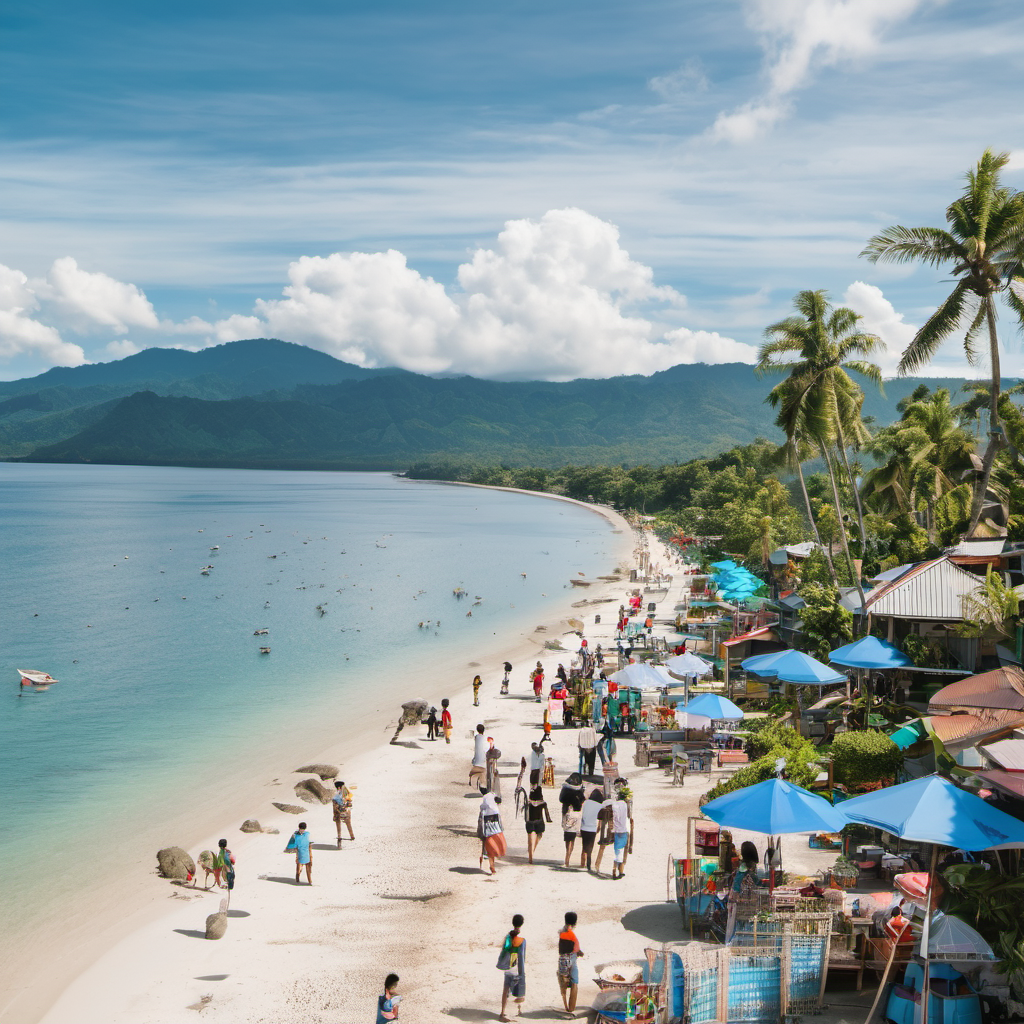
6. Snorkel with Whale Sharks in Donsol:
Swimming with whale sharks in Donsol is a thrilling experience. These gentle giants migrate to the waters off Donsol from November to June. The interaction is regulated to ensure the safety and conservation of the whale sharks, providing a sustainable way to experience these magnificent creatures up close.
7. Explore Intramuros in Manila:
Intramuros, the historic walled city in Manila, offers a glimpse into the Spanish colonial period of the Philippines. Walk along the cobblestone streets, visit Fort Santiago, and explore San Agustin Church, a UNESCO World Heritage Site. The area is rich in history and provides a cultural contrast to the bustling modern city outside its walls.
8. Relax on White Beach in Boracay:
White Beach in Boracay is famous for its powdery white sand and crystal-clear waters. It’s a prime spot for relaxation, water sports, and vibrant nightlife. Enjoy activities such as parasailing, kite surfing, and paddleboarding during the day, and experience the lively beach bars and clubs in the evening.
9. Hike Mount Mayon:
Mount Mayon, known for its perfect cone shape, is an active volcano in Albay. Hiking to the summit is a challenging but rewarding adventure, offering panoramic views of the surrounding landscape. If you prefer a less strenuous activity, you can visit the Mayon Volcano Natural Park and enjoy the scenic views from the Cagsawa Ruins.
10. Discover Vigan:
Vigan, a UNESCO World Heritage Site, is one of the best-preserved Spanish colonial towns in Asia. Stroll through the cobblestone streets, visit the historic houses, and enjoy a calesa (horse-drawn carriage) ride. The blend of Filipino and Spanish architecture, along with its cultural heritage, makes Vigan a unique destination.
11. Kayak in the Underground River in Puerto Princesa:
The Puerto Princesa Subterranean River National Park is home to one of the longest navigable underground rivers in the world. Take a guided boat tour through the cave system to see stunning limestone formations and a variety of wildlife. The park is a UNESCO World Heritage Site and offers a unique and awe-inspiring experience.
12. Visit Cebu’s Historical Sites:
Cebu is rich in history and culture, with many significant landmarks to explore. Visit Magellan’s Cross, the Basilica del Santo Niño, and Fort San Pedro. Cebu is also a gateway to beautiful beaches and diving spots, making it a perfect blend of history and natural beauty.
13. Experience the Ati-Atihan Festival in Kalibo:
The Ati-Atihan Festival, held in January in Kalibo, Aklan, is one of the most vibrant and colorful festivals in the Philippines. It celebrates the Santo Niño (Infant Jesus) and features street dancing, music, and traditional costumes. The lively atmosphere and cultural significance make it a must-see event.
14. Trek to Mount Pulag:
Mount Pulag is the highest peak in Luzon and offers breathtaking views of the “sea of clouds” at sunrise. The trek to the summit passes through mossy forests and grasslands, providing a diverse hiking experience. It’s a popular destination for nature lovers and hikers seeking adventure and stunning vistas.
15. Explore the Enchanted River in Surigao del Sur:
The Enchanted River, located in Hinatuan, Surigao del Sur, is known for its mesmerizing blue waters. The river is believed to be enchanted due to its striking color and the local folklore surrounding it. Visitors can swim in the river, explore the surrounding area, and enjoy the natural beauty of this mystical place.
The Philippines offers a myriad of activities and experiences that cater to every type of traveler. Whether you’re looking for adventure, cultural immersion, relaxation, or wildlife encounters, the Philippines has something to offer. These top 15 activities provide a taste of the diverse and vibrant experiences awaiting you in this beautiful archipelago. So pack your bags, set out on an adventure, and create unforgettable memories in the Philippines.
Family Fun: Things to Do in the Philippines with Kids:
The Philippines is a fantastic destination for families, offering a wide range of activities that cater to children of all ages. From interactive museums and wildlife encounters to beachside adventures and cultural experiences, there’s something to keep every member of the family entertained. Here are some of the best things to do in the Philippines with kids:
1. Manila Ocean Park:
Manila Ocean Park is a premier marine-themed park that offers various attractions and shows. Kids can marvel at the diverse marine life in the Oceanarium, get up close with penguins, and watch sea lion and bird shows.
The park also features interactive exhibits like the Fish Spa, where tiny fish nibble on your feet, and the Jellies Exhibit, showcasing mesmerizing jellyfish displays.
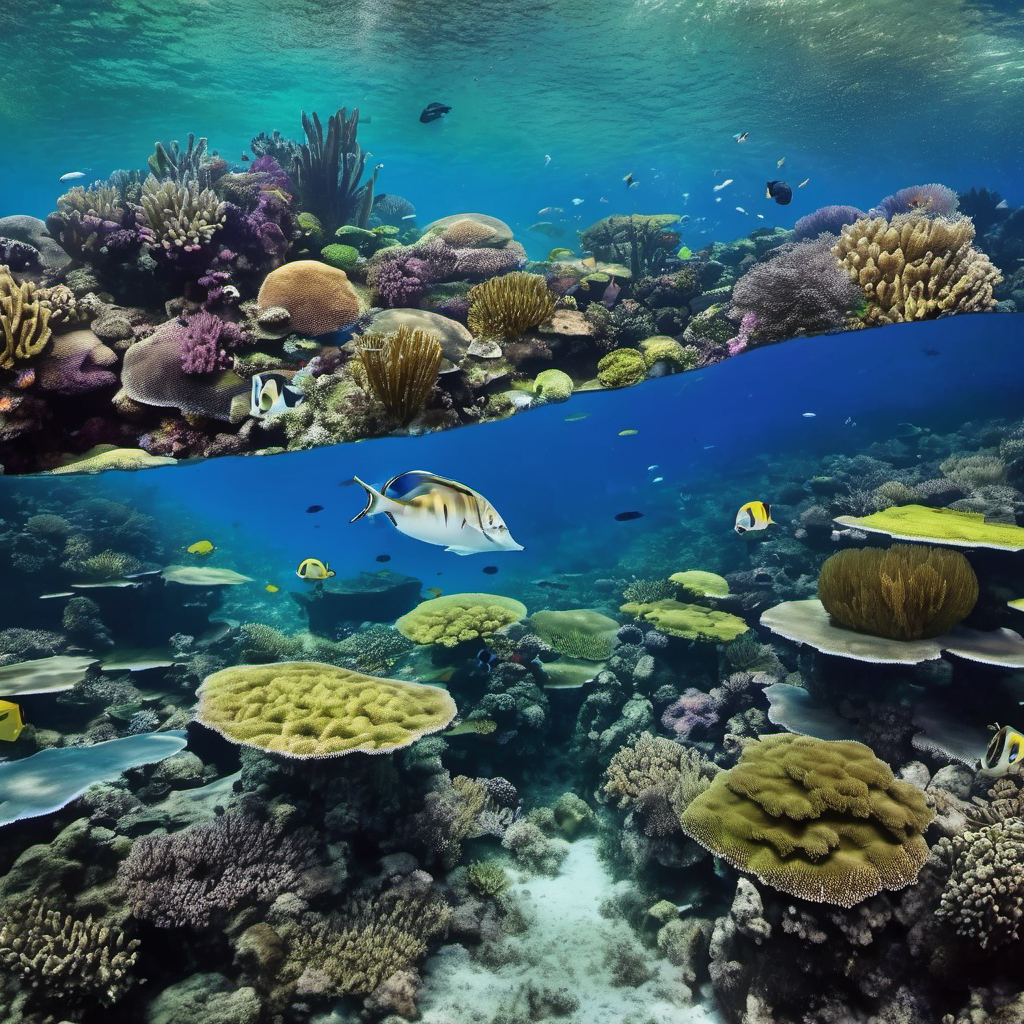
2. Enchanted Kingdom:
Enchanted Kingdom, located in Santa Rosa, Laguna, is the country’s first and only world-class theme park. It offers a variety of rides and attractions for all ages, from thrilling roller coasters and water rides to gentle carousels and kiddie rides. The park also hosts entertaining shows, parades, and seasonal events, making it a fun-filled day for the whole family.
3. Avilon Zoo:
Located in Rodriguez, Rizal, Avilon Zoo is the largest zoological institution in the Philippines. It houses over 3,000 specimens of exotic wildlife, including mammals, birds, reptiles, and aquatic animals. Kids can enjoy close encounters with friendly animals, participate in feeding sessions, and learn about wildlife conservation through educational tours.
4. Museo Pambata:
Museo Pambata, located in Manila, is an interactive children’s museum that offers hands-on exhibits and activities designed to educate and entertain. The museum features themed rooms such as the Old Manila, Kalikasan (Nature), and Career Options, where kids can explore different professions. The museum’s interactive approach makes learning fun and engaging for children.
5. Tagaytay Picnic Grove:
Tagaytay Picnic Grove is a family-friendly park that offers a variety of outdoor activities. Families can enjoy a picnic with scenic views of Taal Volcano, go horseback riding, and try the zipline for an adrenaline rush. The park also has walking trails, a hanging bridge, and a cable car, providing plenty of options for a fun and active day out.
6. Cebu Safari and Adventure Park:
Cebu Safari and Adventure Park, located in Carmen, Cebu, is a vast wildlife sanctuary that offers an immersive safari experience. The park is home to a wide range of animals, including tigers, giraffes, zebras, and various bird species. Families can take guided tours, watch animal shows, and explore themed gardens, making it an educational and exciting adventure for kids.
7. Puerto Princesa Underground River:
A visit to the Puerto Princesa Underground River in Palawan is a unique and memorable experience for families. The guided boat tour through the cave system showcases stunning limestone formations and a variety of wildlife. The tour is both educational and awe-inspiring, providing an opportunity for kids to learn about geology and biodiversity in a fun setting.
8. Chocolate Hills Adventure Park:
Chocolate Hills Adventure Park in Bohol offers outdoor activities that are perfect for adventurous families. The park features the famous Chocolate Hills, where families can enjoy activities such as bike zip-lining, tree-top rope challenges, and horseback riding. The unique landscape and thrilling activities make it a fun and exciting destination for kids.
9. Splash Island:
Splash Island, located in Biñan, Laguna, is the largest water park in the Philippines. It features a variety of water slides, wave pools, and lazy rivers that provide endless fun for kids and adults alike. The park also has designated areas for younger children, ensuring a safe and enjoyable experience for the entire family.
10. Island Hopping in Cebu:
Island hopping in Cebu offers a mix of adventure and relaxation that’s perfect for families. Visit islands like Mactan, Olango, and Nalusuan, where kids can enjoy snorkeling, swimming, and exploring marine sanctuaries. The clear waters, vibrant coral reefs, and diverse marine life provide an exciting underwater adventure for children.
11. Baguio City:
Baguio City, known as the “Summer Capital of the Philippines,” offers a cool climate and various family-friendly attractions. Visit the Strawberry Farm in La Trinidad, where kids can pick fresh strawberries, or explore the Botanical Garden and Burnham Park. The city’s unique blend of nature and urban attractions makes it a perfect getaway for families.
12. Bohol Tarsier Sanctuary:
The Bohol Tarsier Sanctuary is a conservation area dedicated to protecting the Philippine tarsier, one of the smallest primates in the world. Families can take guided tours to see these tiny, nocturnal creatures in their natural habitat. The sanctuary’s educational approach helps kids learn about wildlife conservation and the importance of protecting endangered species.
13. Pinto Art Museum:
Located in Antipolo, the Pinto Art Museum offers a cultural and artistic experience for families. The museum’s extensive collection of contemporary Philippine art is displayed in beautiful Mediterranean-inspired galleries and gardens. The open spaces and interactive exhibits make it a family-friendly destination that encourages creativity and appreciation for the arts.
14. Ocean Adventure Subic Bay:
Ocean Adventure in Subic Bay is a marine park that offers interactive animal shows and encounters. Families can watch dolphins and sea lions perform, meet rescued animals, and learn about marine conservation. The park also offers educational programs and tours, making it both an entertaining and informative experience for kids.
15. Explore the Rice Terraces of Batad:
The Batad Rice Terraces, part of the Banaue Rice Terraces, offer a more remote and adventurous experience for families. The hike to the terraces is moderately challenging but rewarding, with stunning views and a chance to interact with the local Ifugao community. Families can learn about traditional farming techniques and the cultural heritage of the region.
The Philippines offers a plethora of activities and destinations that cater to families with children. From interactive museums and thrilling theme parks to wildlife encounters and cultural experiences, there’s no shortage of fun and educational adventures for kids. Whether you’re exploring the vibrant cities or relaxing on the pristine beaches, the Philippines promises a memorable family vacation filled with laughter, learning, and unforgettable experiences.
Romantic Escapes: Things to Do in the Philippines for Couples:
The Philippines is an ideal destination for couples seeking romance and adventure. Here are some activities perfect for couples:The Philippines, with its breathtaking landscapes, serene beaches, and vibrant culture, offers the perfect backdrop for a romantic getaway. Whether you’re celebrating a honeymoon, an anniversary, or simply want to enjoy some quality time together, this tropical paradise has plenty of activities to create lasting memories. Here are some of the best things to do in the Philippines for couples:
1. Sunset Cruise in Manila Bay:
Start your romantic escape with a sunset cruise in Manila Bay. As the sun dips below the horizon, the sky is painted with shades of pink, orange, and purple, creating a magical ambiance. Enjoy a leisurely cruise, savoring cocktails and a delicious dinner, while taking in the stunning views of the Manila skyline. The gentle sea breeze and the serene atmosphere make for an unforgettable romantic evening.
2. Private Island Getaway in Palawan:
For a truly secluded and intimate experience, book a stay on a private island in Palawan. There are several exclusive resorts that offer luxurious accommodations, pristine beaches, and personalized services. Spend your days snorkeling in crystal-clear waters, exploring hidden lagoons, and enjoying candlelit dinners on the beach. The tranquility and natural beauty of Palawan make it an ideal destination for couples seeking a romantic escape.
3. Hot Air Balloon Ride in Pampanga:
Experience the thrill of a hot air balloon ride in Pampanga, offering panoramic views of the countryside at sunrise. Float gently above the landscape, taking in the lush fields, mountains, and rivers below. The breathtaking views and the serene, intimate setting make this an incredibly romantic activity. Many tour operators also offer a champagne breakfast after the flight, adding a touch of luxury to the experience.
4. Spa Retreat in Tagaytay:
Tagaytay is known for its cool climate and stunning views of Taal Volcano, making it a popular destination for a relaxing spa retreat. Treat yourselves to a day of pampering at one of the many world-class spas in the area. Enjoy couples’ massages, soak in hot tubs, and indulge in rejuvenating treatments. The serene environment and the soothing ambiance provide the perfect setting for relaxation and romance.
5. Explore the Chocolate Hills in Bohol:
The Chocolate Hills in Bohol offer a unique and picturesque setting for couples. Rent a motorbike and explore the rolling hills together, stopping at various viewpoints to take in the scenery. Visit the nearby Butterfly Sanctuary or take a leisurely cruise on the Loboc River, complete with a buffet lunch and live music. The combination of natural beauty and cultural experiences makes Bohol a charming destination for couples.
6. Romantic Dinner at Antonio's in Tagaytay:
Antonio’s in Tagaytay is one of the most romantic dining spots in the Philippines. Set in a lush garden, this fine-dining restaurant offers an elegant ambiance and exquisite cuisine. Enjoy a multi-course meal featuring a blend of international and Filipino flavors, paired with fine wine. The attentive service and the intimate setting make it a perfect spot for a special dinner with your loved one.
7. Snorkeling and Diving in Apo Island:
Apo Island, located off the coast of Negros Oriental, is a fantastic destination for couples who love marine life. The island is renowned for its vibrant coral reefs and diverse marine species. Spend your days snorkeling or diving together, exploring the underwater world hand in hand. The island also offers beautiful beaches and hiking trails, providing plenty of opportunities for adventure and relaxation.
8. Helicopter Tour of Boracay:
For a truly unforgettable experience, take a helicopter tour of Boracay. See the island’s stunning white sand beaches and turquoise waters from above, and get a bird’s eye view of its lush landscape. The tour offers a unique perspective and a sense of adventure, making it a perfect activity for couples looking to make their trip extra special.
9. Stargazing in Batanes:
Batanes, the northernmost province of the Philippines, is known for its unspoiled beauty and clear night skies. The remote location and lack of light pollution make it an ideal spot for stargazing. Spend a night camping under the stars, or stay in one of the charming traditional Ivatan houses. The serene environment and the stunning celestial views create a romantic and memorable experience.
10. Beachfront Picnic in Siargao:
Siargao, known for its surf culture and laid-back vibe, offers numerous secluded spots for a romantic beachfront picnic. Pack a basket with local delicacies, find a quiet stretch of beach, and enjoy a meal together with the sound of waves as your soundtrack. The island’s natural beauty and relaxed atmosphere make it a perfect destination for couples seeking a tranquil escape.
11. Visit the Ruins in Negros Occidental:
The Ruins in Talisay, Negros Occidental, is often referred to as the “Taj Mahal of the Philippines.” This beautiful, skeletal structure of an old mansion offers a glimpse into a romantic past. Stroll through the gardens, learn about the history of the place, and capture stunning photos against the backdrop of the setting sun. The Ruins provide a unique and romantic setting for couples.
12. Horseback Riding in Batangas:
Explore the scenic landscapes of Batangas on horseback. Several resorts and farms in the area offer guided horseback riding tours through picturesque trails, taking you past lush fields, forests, and rivers. The leisurely pace and the tranquil surroundings make it a romantic activity for couples looking to connect with nature and each other.
13. Sunrise Trek to Mount Pulag:
For couples who love adventure and nature, a sunrise trek to Mount Pulag is a must. The hike to the summit is challenging but rewarding, with breathtaking views of the “sea of clouds” at sunrise. The experience of conquering the peak together and witnessing the stunning scenery creates a sense of accomplishment and deep connection.
14. Couples’ Cooking Class in Cebu:
Learn to cook traditional Filipino dishes together by taking a couples’ cooking class in Cebu. Many culinary schools and local chefs offer hands-on classes that teach you how to prepare authentic dishes such as Adobo, Sinigang, and Lechon. The shared experience of cooking and tasting your creations makes for a fun and romantic activity.
15. Nightlife in Makati:
Makati, the financial district of Manila, is also known for its vibrant nightlife. Enjoy a night out at one of the city’s stylish rooftop bars, where you can sip cocktails while taking in the stunning views of the city skyline. For a more lively experience, visit Poblacion, Makati’s hip and trendy neighborhood, which offers an array of bars, clubs, and live music venues.
15. Nightlife in Makati:
Makati, the financial district of Manila, is also known for its vibrant nightlife. Enjoy a night out at one of the city’s stylish rooftop bars, where you can sip cocktails while taking in the stunning views of the city skyline. For a more lively experience, visit Poblacion, Makati’s hip and trendy neighborhood, which offers an array of bars, clubs, and live music venues.
The Philippines offers a myriad of romantic activities and destinations that cater to every couple’s interests. Whether you’re looking for adventure, relaxation, or cultural experiences, this tropical paradise has something to offer. From secluded island getaways and luxurious spa retreats to thrilling adventures and intimate dining experiences, the Philippines promises a romantic escape that will leave you with unforgettable memories. So pack your bags, grab your loved one, and set off on a journey to discover the romantic charm of the Philippines.
A Glimpse into History: The Philippines' Rich Heritage:
The Philippines is an archipelago steeped in history, with a heritage that reflects a tapestry of indigenous cultures, colonial influences, and modern transformations. From ancient civilizations and colonial rule to a vibrant present-day culture, the story of the Philippines is both complex and fascinating. Here, we delve into the rich heritage of this Southeast Asian nation, exploring its past and present.
Ancient Beginnings:
The history of the Philippines dates back to thousands of years before Spanish colonization. Archaeological findings suggest that the earliest inhabitants were the Negritos, who arrived around 30,000 years ago. Over time, these early settlers were joined by Austronesian-speaking peoples from Taiwan, leading to the development of distinct cultural and linguistic groups across the islands.
Pre-Colonial Societies:
Before the arrival of the Spaniards, the Philippines was composed of various independent barangays (small villages) and sultanates, each with its own social structure, culture, and trade networks. The barangays were often ruled by a datu (chief), while the sultanates in the southern part of the archipelago, such as the Sultanate of Sulu and the Sultanate of Maguindanao, had more complex political systems influenced by Islam.
Trade was a significant aspect of pre-colonial society, with the islands engaging in commerce with neighboring regions such as China, India, and the Malay Archipelago. This period saw the exchange of goods, ideas, and cultural practices, which enriched the local culture.
Spanish Colonization (1565-1898):
The arrival of Ferdinand Magellan in 1521 marked the beginning of Spanish interest in the Philippines. However, it wasn’t until 1565 that Miguel López de Legazpi established the first permanent Spanish settlement in Cebu, paving the way for over three centuries of Spanish rule.
During the Spanish colonial period, the Philippines was unified under a single colonial government for the first time. The Spanish introduced Christianity, which became a significant part of Filipino identity. Today, the Philippines is the largest predominantly Catholic country in Asia. The Spanish also built many enduring structures, including churches, forts, and schools, many of which still stand as historical landmarks.
The Galleon Trade:
From 1565 to 1815, the Philippines was a crucial hub in the Manila-Acapulco Galleon Trade, connecting Asia and the Americas. This trade route facilitated the exchange of goods such as silk, spices, and silver, significantly impacting the economy and culture of the Philippines. The galleon trade also brought new ideas and influences, contributing to the cultural melting pot that the Philippines is today.
The Philippine Revolution and American Period (1898-1946):
By the late 19th century, growing discontent with Spanish rule led to the Philippine Revolution. Figures such as José Rizal, Andrés Bonifacio, and Emilio Aguinaldo became national heroes, advocating for independence and social reforms. Rizal’s novels, “Noli Me Tangere” and “El Filibusterismo,” inspired a sense of national identity and resistance against colonial oppression.
The revolution culminated in the declaration of independence from Spain on June 12, 1898. However, this victory was short-lived as the Philippines soon became a territory of the United States following the Spanish-American War. The American period brought about significant changes, including the introduction of public education, democratic institutions, and infrastructure development.
World War II and the Japanese Occupation (1941-1945):
The Philippines faced another tumultuous period during World War II when it was occupied by Japanese forces. The occupation was marked by significant hardship, resistance, and suffering. The Battle of Manila in 1945 resulted in extensive destruction and loss of life. However, the end of the war also set the stage for the Philippines’ eventual independence.
Post-Independence Era (1946-Present):
On July 4, 1946, the Philippines gained full independence from the United States. The post-independence era has been a period of rebuilding and development, marked by political challenges and economic growth. The country experienced a series of political upheavals, including the authoritarian regime of Ferdinand Marcos, the People Power Revolution in 1986, and subsequent efforts to strengthen democratic institutions.
Modern-Day Philippines:
Today, the Philippines is a vibrant democracy with a rapidly growing economy. The country boasts a rich cultural heritage that blends indigenous traditions with Spanish, American, and other influences. Festivals such as Sinulog, Ati-Atihan, and Pahiyas showcase the country’s colorful traditions and community spirit.
The Philippines is also known for its natural beauty, with stunning beaches, lush mountains, and diverse wildlife attracting tourists from around the world. Major cities like Manila, Cebu, and Davao offer a mix of historical landmarks, modern amenities, and thriving arts and culture scenes.
Preservation of Heritage:
Efforts to preserve and promote the Philippines’ rich heritage are ongoing. UNESCO has recognized several sites in the country as World Heritage Sites, including the Baroque Churches of the Philippines, the Historic City of Vigan, and the Rice Terraces of the Philippine Cordilleras. These sites highlight the architectural, historical, and cultural significance of the nation’s heritage.
Various government agencies, non-profit organizations, and local communities are actively involved in heritage conservation. Programs focus on restoring historical landmarks, protecting cultural traditions, and promoting awareness and appreciation of the country’s diverse heritage.
The Philippines’ rich heritage is a testament to its vibrant history and cultural diversity. From ancient civilizations and colonial influences to modern-day achievements, the story of the Philippines is one of resilience, adaptation, and continuous growth. As the country moves forward, it remains committed to preserving its past while embracing the future, ensuring that its unique heritage continues to inspire and enrich the lives of Filipinos and visitors alike.
Trending: The Best Places to Visit in 2024:
As travel trends continue to evolve, the Philippines remains a top destination for travelers seeking unique experiences.The Philippines, an archipelago of more than 7,000 islands, is a treasure trove of stunning destinations waiting to be explored. With its beautiful beaches, lush mountains, vibrant cities, and rich cultural heritage, the Philippines continues to captivate travelers from all over the world. Here are the trending destinations you should consider visiting in the Philippines in 2024.
1. Siargao:
Siargao, known as the “Surfing Capital of the Philippines,” has become a hotspot for surfers and adventure seekers. But beyond its world-class waves, Siargao offers much more. Explore the enchanting Sohoton Cove with its mystical lagoons and caves, take a dip in the crystal-clear waters of Magpupungko Rock Pools, or enjoy the idyllic views at Cloud 9 Boardwalk. Siargao’s laid-back vibe, combined with its natural beauty, makes it a must-visit destination in 2024.
2. El Nido, Palawan:
El Nido continues to be a top choice for travelers seeking breathtaking natural landscapes. Known for its dramatic limestone cliffs, pristine beaches, and vibrant marine life, El Nido offers an array of activities. Go island hopping to see the stunning Big Lagoon, Small Lagoon, and Secret Lagoon, snorkel or dive in Bacuit Bay, or relax on the powdery white sands of Nacpan Beach. El Nido’s stunning scenery and tranquil atmosphere make it an unforgettable destination.
3. Batanes:
Batanes, the northernmost province of the Philippines, is often likened to a piece of heaven on earth. With its rolling hills, dramatic cliffs, and traditional stone houses, Batanes offers a unique and serene escape. Visit the iconic Basco Lighthouse, marvel at the panoramic views from Marlboro Country, and experience the warm hospitality of the Ivatan people. Batanes’ untouched beauty and cultural richness make it a perfect destination for those looking to disconnect and recharge.
4. Cebu:
Cebu is a dynamic destination that offers a mix of urban and natural attractions. In Cebu City, explore historical landmarks such as Magellan’s Cross and Fort San Pedro. For beach lovers, the nearby islands of Malapascua and Bantayan offer stunning beaches and excellent diving opportunities. Don’t miss the chance to swim with whale sharks in Oslob, or visit the majestic Kawasan Falls in Badian. Cebu’s diverse attractions make it a versatile and exciting destination.
5. Bohol:
Bohol is famous for its unique natural wonders and rich cultural heritage. The Chocolate Hills, with their conical shapes and changing colors, are a must-see. Visit the Tarsier Sanctuary to see the world’s smallest primates, and take a scenic cruise along the Loboc River. For a taste of history, explore the centuries-old Baclayon Church and the Blood Compact Shrine. Bohol’s blend of natural beauty and cultural landmarks makes it an appealing destination for all types of travelers.
6. Coron, Palawan:
Coron, another gem in Palawan, is renowned for its crystal-clear lakes, vibrant coral reefs, and WWII shipwrecks. Dive enthusiasts will be thrilled with the numerous dive sites, including the famous Barracuda Lake and the Japanese shipwrecks. For a more relaxed experience, take a boat tour to Kayangan Lake and Twin Lagoon, or enjoy the pristine beaches of Malcapuya Island. Coron’s stunning underwater and above-water landscapes make it a paradise for nature lovers.
7. Siargao:
Siargao is not just for surfers; it has become a trendy destination for all kinds of travelers. In addition to its famous surf breaks, Siargao offers a range of activities and sights. Take a boat tour to Sugba Lagoon, explore the hidden beaches of Guyam, Daku, and Naked Islands, or enjoy the vibrant nightlife in General Luna. Siargao’s charming atmosphere and diverse offerings make it a top destination in 2024.
8. Boracay:
After a significant rehabilitation effort, Boracay has regained its status as one of the world’s best beaches. With its powdery white sand and crystal-clear waters, White Beach is the island’s main attraction. Boracay also offers a range of water sports, vibrant nightlife, and luxurious resorts. Visit Puka Beach for a quieter experience, or take a sunset sail on a traditional paraw. Boracay’s rejuvenated beauty and lively ambiance ensure it remains a top choice for beach lovers.
9. Sagada:
For those seeking a cooler climate and a touch of mysticism, Sagada is the perfect destination. Nestled in the mountains of the Cordillera region, Sagada is known for its stunning landscapes and unique cultural practices. Explore the famous Hanging Coffins, hike to Bomod-ok Falls, and witness the sunrise at Kiltepan Viewpoint. The peaceful ambiance and cultural richness of Sagada provide a refreshing retreat from the bustling city life.
10. Vigan:
Vigan, a UNESCO World Heritage Site, offers a glimpse into the Philippines’ colonial past. Stroll along Calle Crisologo, with its well-preserved Spanish-era houses, and take a calesa ride through the cobblestone streets. Visit the Syquia Mansion Museum and the Bantay Bell Tower for a taste of history. Vigan’s charming architecture and historical significance make it a must-visit destination for history enthusiasts.
11. Davao City:
Davao City, located in Mindanao, is known for its friendly locals and diverse attractions. Visit the Philippine Eagle Center to see the majestic national bird, and explore the beautiful gardens of Eden Nature Park. For adventure seekers, Mount Apo, the highest peak in the Philippines, offers challenging trekking opportunities. Davao City’s blend of urban and natural attractions, along with its vibrant food scene, makes it a dynamic destination.
12. Panglao Island, Bohol:
Panglao Island, located near Bohol, is a rising star among beach destinations in the Philippines. Alona Beach is the island’s main attraction, offering white sand beaches, clear waters, and a range of accommodations. Dive enthusiasts can explore the nearby Balicasag and Pamilacan Islands, known for their vibrant marine life. Panglao’s tranquil beauty and accessible location make it a perfect spot for a beach getaway.
13. Camiguin:
Camiguin, known as the “Island Born of Fire,” is home to several volcanoes and hot springs. The island’s natural beauty is complemented by its historical sites, such as the Sunken Cemetery and the Old Spanish Church Ruins. Enjoy the cool waters of Katibawasan Falls, or take a dip in the Ardent Hot Springs. Camiguin’s unique landscapes and laid-back atmosphere make it a hidden gem worth exploring
14. La Union:
La Union has emerged as a trendy destination for surfers and beach lovers. San Juan Beach is the hub for surfing, offering waves suitable for both beginners and experienced surfers. The area also boasts a burgeoning food scene, with numerous beachside cafes and restaurants. Explore the nearby Tangadan Falls, or take a scenic drive to the La Union Botanical Garden. La Union’s vibrant surf culture and relaxed vibe make it a perfect weekend getaway.
15. Iloilo City:
Iloilo City, known for its historical landmarks and culinary delights, is a rising star among urban destinations in the Philippines. Visit the iconic Molo Church, the grand Iloilo Museum, and the Jaro Cathedral. For food lovers, try the local delicacies such as La Paz Batchoy and Pancit Molo. Iloilo’s blend of history, culture, and cuisine makes it an exciting destination to explore.
The Philippines is a land of diverse destinations, each offering its unique charm and attractions. Whether you’re looking for adventure, relaxation, cultural experiences, or natural beauty, the Philippines has something to offer every traveler. In 2024, these trending destinations promise unforgettable experiences and memories that will last a lifetime. So pack your bags, set off on an adventure, and discover the best of what the Philippines has to offer.
Wildlife Wonders: Exploring the Philippines' Biodiversity:
The Philippines, an archipelago of over 7,000 islands, is a treasure trove of biodiversity. From its lush rainforests and extensive coral reefs to its diverse array of flora and fauna, the country is a paradise for nature lovers and wildlife enthusiasts. Home to some of the world’s rarest species and unique ecosystems, the Philippines offers endless opportunities for exploration and discovery. Let’s delve into the wildlife wonders that make this Southeast Asian nation a must-visit destination for those passionate about nature.

Unique Flora and Fauna:
The Philippines is one of the 17 megadiverse countries in the world, boasting an astonishing variety of species, many of which are endemic. This means they are found nowhere else on the planet.
Philippine Eagle:
One of the most iconic and critically endangered species is the Philippine eagle, also known as the monkey-eating eagle. With a wingspan of over seven feet, it is one of the largest and most powerful eagles in the world. Found primarily in the rainforests of Luzon, Samar, Leyte, and Mindanao, this majestic bird symbolizes the rich natural heritage of the Philippines. Conservation efforts are crucial for its survival, with places like the Philippine Eagle Center in Davao City playing a vital role in protecting and breeding these magnificent raptors.
Tarsier:
Another fascinating creature is the Philippine tarsier, one of the smallest primates in the world. These nocturnal animals, with their large, expressive eyes, are primarily found in Bohol, Leyte, and Mindanao. They live in the dense forests and are known for their incredible leaping ability, moving from tree to tree in search of insects. Visitors can see tarsiers up close at the Philippine Tarsier Sanctuary in Corella, Bohol, where efforts are made to protect their natural habitat and educate the public about their conservation.
Marine Biodiversity:
The Philippines is part of the Coral Triangle, known as the global center of marine biodiversity. Its waters are teeming with life, making it a premier destination for diving and snorkeling.
Coral Reefs:
The coral reefs of the Philippines are among the most diverse in the world, with Tubbataha Reefs Natural Park being a UNESCO World Heritage site. Located in the Sulu Sea, Tubbataha is a haven for marine life, featuring over 600 species of fish, 360 species of corals, and a variety of sharks, dolphins, and sea turtles. Diving here is an unparalleled experience, offering encounters with whale sharks, manta rays, and vibrant coral gardens.
Dugongs:
The dugong, or sea cow, is a gentle marine mammal found in the coastal waters of Palawan. These herbivores graze on seagrass meadows and are often spotted in the protected areas of the Calamianes Islands. Conservation programs aim to protect these vulnerable animals from threats such as habitat loss and entanglement in fishing gear.
Terrestrial Biodiversity:
The rainforests and mountains of the Philippines are rich in terrestrial biodiversity, offering habitat to a myriad of species.
Palawan Bearcat:
The Palawan bearcat, or binturong, is an arboreal mammal found in the forests of Palawan. With its prehensile tail and distinctive musky odor, it is an intriguing species to observe. This nocturnal creature spends most of its time in the trees, feeding on fruits, small animals, and insects. The bearcat is a reminder of the unique wildlife that thrives in the Philippines’ forested regions.
Philippine Deer:
The Philippine deer, also known as the Philippine sambar, is native to the islands of Luzon, Mindanao, and Visayas. These shy and elusive animals are usually found in forested areas and grasslands. Conservation efforts focus on protecting their habitats from deforestation and hunting, ensuring that these elegant creatures continue to roam the Philippine wilderness.
Conservation Efforts:
The Philippines faces significant challenges in wildlife conservation, including habitat destruction, climate change, and illegal wildlife trade. However, numerous organizations and initiatives are working tirelessly to protect the country’s natural heritage.
Protected Areas:
The Philippines has established numerous protected areas to safeguard its rich biodiversity. These include national parks, wildlife sanctuaries, and marine reserves. Notable examples are the Puerto Princesa Subterranean River National Park, the Apo Reef Natural Park, and the Northern Sierra Madre Natural Park. These protected areas are vital for the conservation of endangered species and the preservation of unique ecosystems.
Community Involvement:
Local communities play a crucial role in conservation efforts. Many community-based programs focus on sustainable practices and environmental education. By involving local residents in conservation activities, these programs help foster a sense of stewardship and responsibility for protecting the natural environment.
Ecotourism:
Ecotourism is a growing sector in the Philippines, offering travelers the chance to experience the country’s natural wonders while supporting conservation efforts. Ecotourism initiatives often include guided tours, wildlife watching, and educational programs that highlight the importance of preserving biodiversity. Popular ecotourism destinations include the Donsol Whale Shark Interaction Center, the Mount Apo Natural Park, and the Batanes Protected Landscapes and Seascapes.
Exploring the Philippines’ biodiversity is a journey through one of the most ecologically diverse regions on the planet. From the skies above to the depths of the ocean, the country is home to an incredible array of wildlife and natural landscapes. Whether you’re an avid bird watcher, a marine enthusiast, or a casual nature lover, the Philippines offers countless opportunities to connect with its rich and varied ecosystems. As conservation efforts continue to protect and preserve this natural heritage, the Philippines remains a shining example of the beauty and importance of biodiversity. So, pack your bags, bring your binoculars and dive gear, and get ready to explore the wildlife wonders of the Philippines.
Travel Tips and Awareness:
Traveling to the Philippines is an exciting adventure filled with stunning landscapes, rich cultural experiences, and friendly locals. To make the most of your trip and ensure a smooth, enjoyable journey, it’s essential to be well-prepared and aware of certain travel tips. Here’s a comprehensive guide to help you navigate your way through this beautiful archipelago.
Before You Go:
Visa and Entry Requirements:
- Visa-Free Entry: Citizens of many countries, including the United States, Canada, Australia, and most European nations, can enter the Philippines without a visa for stays of up to 30 days. Ensure your passport is valid for at least six months beyond your planned stay.
- Visa Extension: If you wish to stay longer, you can apply for a visa extension at the Bureau of Immigration in the Philippines. It’s advisable to do this well before your initial 30-day period expires to avoid any issues.
Vaccinations and Health:
- Vaccinations: It’s recommended to be up-to-date on routine vaccinations, including measles, mumps, rubella (MMR), diphtheria, tetanus, and pertussis (DPT). Additionally, consider vaccinations for hepatitis A and B, typhoid, and rabies, especially if you plan to visit rural areas or interact with animals.
- Health Precautions: Bring any necessary medications and a basic first-aid kit. Be aware of the risk of mosquito-borne diseases such as dengue fever and malaria, especially in rural and forested areas. Use insect repellent, wear long sleeves and pants, and sleep under mosquito nets if necessary.
Packing Essentials:
Clothing and Gear:
- Lightweight and Breathable Clothing: The Philippines has a tropical climate, so pack lightweight, breathable clothes. Consider moisture-wicking fabrics for comfort.
- Sun Protection: Bring plenty of sunscreen, a wide-brimmed hat, and sunglasses to protect yourself from the intense tropical sun.
- Waterproof Gear: If you plan to visit beaches, islands, or engage in water activities, pack a waterproof bag and quick-drying clothes.
Travel Essentials:
- Power Adapter: The Philippines uses a 220V supply voltage and 60Hz frequency. Bring a suitable power adapter if your devices are from a country with a different electrical standard.
- Reusable Water Bottle: Stay hydrated by carrying a reusable water bottle. Tap water is not safe to drink, so fill up with filtered or bottled water.
Navigating the Philippines:
Transportation:
- Domestic Flights: The most efficient way to travel between islands is by domestic flights. Major airlines include Philippine Airlines, Cebu Pacific, and AirAsia. Book flights in advance for the best deals.
- Ferries and Boats: For shorter island hops, ferries and boats are common. Companies like 2GO Travel and Montenegro Lines operate extensive routes. Always check schedules and book tickets in advance during peak seasons.
- Public Transport: Jeepneys and tricycles are common modes of transport within cities and towns. They are affordable but can be crowded. Taxis and ride-hailing services like Grab are available in major cities.
Staying Safe and Healthy:
Personal Safety:
- Stay Vigilant: Like any travel destination, it’s important to stay aware of your surroundings. Avoid displaying expensive items, keep an eye on your belongings, and be cautious in crowded areas.
- Local Customs and Etiquette: Filipinos are known for their hospitality and politeness. Greet people with a smile, use “po” and “opo” as a sign of respect, and be mindful of local customs, especially in rural areas.
Environmental Awareness:
- Sustainable Tourism: The Philippines is home to delicate ecosystems. Practice sustainable tourism by reducing plastic use, avoiding activities that harm wildlife, and respecting natural habitats.
- Coral Reefs and Marine Life: When snorkeling or diving, avoid touching corals and marine animals. Use reef-safe sunscreen to protect the marine environment.
Money Matters:
Currency and Payments:
- Philippine Peso (PHP): The local currency is the Philippine Peso. It’s advisable to carry some cash, especially when traveling to remote areas where ATMs may be scarce.
- ATMs and Credit Cards: ATMs are widely available in cities and towns. Credit cards are accepted in most hotels, restaurants, and larger stores, but smaller businesses may only accept cash.
Communication and Connectivity:
Language:
- English Proficiency: English is widely spoken and understood in the Philippines, making communication relatively easy for English-speaking travelers.
- Local Languages: The Philippines has over 170 languages and dialects. Learning a few basic phrases in Tagalog, such as “salamat” (thank you) and “magandang araw” (good day), can enhance your travel experience.
Internet and SIM Cards:
- Mobile Internet: Purchase a local SIM card for affordable mobile internet access. Major providers include Globe, Smart, and DITO. SIM cards can be bought at the airport or in major cities.
- Wi-Fi: Wi-Fi is available in most hotels, cafes, and restaurants, but speeds can vary. Consider using mobile data for more reliable connectivity.
Cultural Awareness:
Respecting Traditions:
- Religion: The Philippines is predominantly Catholic, and religious practices are deeply ingrained in daily life. Dress modestly when visiting churches and religious sites.
- Festivals and Celebrations: The Philippines is known for its vibrant festivals. If you’re visiting during a festival, participate respectfully and enjoy the cultural experience.
Local Cuisine:
Food Safety:
- Street Food: Filipino street food is delicious but can sometimes pose a risk for travelers with sensitive stomachs. Choose vendors with high turnover and food cooked fresh.
- Water: Stick to bottled or filtered water. Avoid ice in drinks unless you’re sure it’s made from purified water.
Traveling to the Philippines offers an enriching experience filled with natural beauty, cultural diversity, and warm hospitality. By being prepared and aware of local customs, health precautions, and practical travel tips, you can ensure a safe, enjoyable, and memorable trip. Whether you’re exploring bustling cities, pristine beaches, or lush mountains, the Philippines has something to offer every traveler. So pack your bags, embrace the adventure, and immerse yourself in the wonders of this beautiful archipelago.
Overall Conclusion:
The Philippines is a destination that captivates travelers with its diverse landscapes, rich cultural heritage, and warm, welcoming people. From the thrill of island hopping to the serenity of its stunning beaches, the country offers an array of experiences that cater to every type of traveler. Whether you’re an adventure seeker, a history buff, a foodie, or a nature lover, the Philippines has something special for you.
Adventure Awaits:
The adventure opportunities in the Philippines are endless. The thrill of surfing the waves in Siargao, diving into the vibrant marine life of Palawan, and exploring the hidden caves of Samar is unmatched. Each island and province offers unique adventures that promise to leave you with unforgettable memories.
Culinary Delights:
The culinary scene in the Philippines is a reflection of its rich cultural history and diverse influences. From street food delicacies to high-end dining experiences, the country’s cuisine is sure to tantalize your taste buds. Enjoy the flavors of adobo, sinigang, and lechon, and explore the best restaurants that offer a taste of Filipino hospitality and creativity.
Family Fun and Romantic Escapes:
For families, the Philippines provides a wealth of activities that ensure fun for all ages. Whether it’s exploring wildlife sanctuaries, enjoying the beaches, or engaging in cultural activities, there’s something for everyone. Couples can find romantic escapes in serene islands, enjoy breathtaking sunsets, and immerse themselves in the vibrant nightlife and entertainment scenes in cities like Manila and Cebu.
Rich Heritage:
The Philippines’ rich heritage is a tapestry woven from its pre-colonial history, Spanish colonization, American influence, and indigenous cultures. Exploring historical landmarks, traditional festivals, and centuries-old churches gives you a deep appreciation of the country’s past and its journey to the present.
Trending Destinations and Biodiversity:
2024 is a year that highlights new and trending destinations in the Philippines. Places like Siargao, El Nido, Batanes, and Cebu are calling out to be explored with their unique charm and beauty. The country’s biodiversity, from the majestic Philippine eagle to the stunning coral reefs, showcases a commitment to conservation and sustainability. Visiting these natural wonders reminds us of the importance of preserving these treasures for future generations.
Travel Tips and Awareness:
To make the most of your trip, being well-prepared with travel tips and awareness is key. Understanding the local customs, health precautions, and essential travel items ensures a smooth and enjoyable experience. Respecting the environment and practicing sustainable tourism helps maintain the beauty and integrity of the Philippines.
Final Thoughts:
In conclusion, the Philippines is more than just a travel destination; it is a vibrant, living mosaic of natural wonders, cultural richness, and heartfelt hospitality. Each journey to the Philippines offers new discoveries, whether it’s the tranquil beaches, the bustling markets, the lush landscapes, or the spirited festivals. Embrace the adventure, savor the flavors, and immerse yourself in the stories and experiences that make the Philippines a truly magical place. Whether you’re visiting for the first time or returning to explore more, the Philippines welcomes you with open arms and endless possibilities. So go ahead, embark on your Filipino adventure, and create memories that will last a lifetime.

